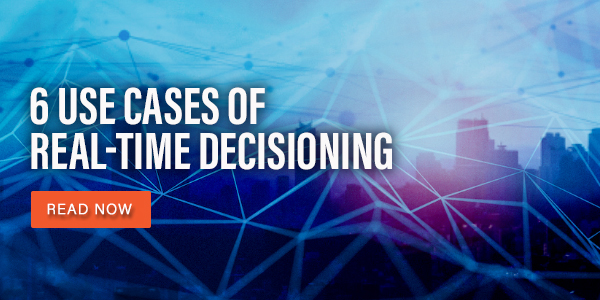In today’s data-driven age, organizations need to make smart decisions when it comes to how they manage their data.
To this end, there are two key technologies used to store, process, and analyze data that they need to choose between depending on their use case: online analytical processing (OLAP) and online transaction processing (OLTP).
Though both technologies can help organizations unlock the full power of their data, they serve distinct purposes and aren’t interchangeable. In this post, we’ll examine OLAP and OLTP, what the two technologies have in common, and how they’re different to give you a better idea of which is best for you depending on your requirements.

Table Of Contents
What is OLAP?
OLAP is a technology used for data analysis, decision-making, and business intelligence. Typically, OLAP systems enable teams to analyze large quantities of data rapidly, which makes them suited for a number of mission-critical use cases, including financial analysis, sales forecasting, and pattern detection across vast data sets.
OLAP systems use a multi-dimensional data model. Data is organized in cubes, dimensions, and hierarchies to facilitate fast and flexible analysis in what’s a read-intensive process. Since OLAP systems are primarily used for historical data analysis, they don’t require real-time data updates.
What is OLTP?
OLTP is a type of data processing that focuses on managing the day-to-day transactional operations of an organization. Instead of looking backward, OLTP systems are designed to handle a high volume of online transactions in real time, ensuring data integrity and consistency along the way. Like OLAP databases, OLTP systems allow for rapid processing; they’re optimized for quick and frequent data updates and are typically used for mission-critical applications.
OLTP databases store data in rows to facilitate fast and efficient transactional operations. Write-intensive by design, OLTP systems are best suited for quick data inserts, updates, and deletes. Since OLTP databases are built to manage transactional operations, they require real-time data updates to ensure data accuracy and reflect real-world business events as they occur.
These types of systems are particularly useful for ecommerce businesses, helping them manage online purchases, process orders, and manage inventory in real time. They’re also well-suited for financial institutions and can handle banking transactions, account balances, and fund transfers in particular. Additionally, OLTP databases are ideal for telco operators who can use them to process billing and payments, ensure network resources are managed effectively, and capitalize on upselling and cross-selling opportunities in the moment, among other use cases.
OLAP vs. OLTP: Similarities
OLAP and OLTP have a lot in common. For starters, both technologies are used for data management and require structured data storage to organize and manage data efficiently. At the same time, both systems are designed to prioritize data consistency; OLAP ensures that historical data is accurate and reliable while OLTP ensures that real-time transactional data is accurate.
What’s more, both OLAP and OLTP demand high-performance processing; OLAP systems need to handle complex queries for rapid analysis while OLTP systems need to quickly process tons of small-scale transactions in real time. For this reason, both technologies require powerful, reliable IT infrastructure to operate.
OLAP vs. OLTP: Differences
Despite the commonalities, the two data processing technologies possess, they have a number of key differentiators. Whereas OLAP architecture is designed to read and analyze large swaths of data, OLTP prioritizes write operations and is best suited for write-heavy workloads across many transactions.
This points to the biggest difference between the two technologies: OLAP is designed for historical data analysis and OLTP is designed for processing real-time database transactions, just like the A and the T in each acronym suggests.
Other differences include:
- Data models. OLAP uses a multidimensional data model while OLTP uses a row-based model. The former is suitable for analytics queries and drill-downs while the latter is best for rapid retrieval and processing of records during real-time transactions.
- Latency. While both OLAP and OLTP are capable of quick analysis, OLAP systems can tolerate higher latency. They’re tasked with historical analysis while OLTP systems are focused on real-time transactions and thus require low latency to maintain data accuracy.
- Use cases. As a backward-looking technology, OLAP is ideal for business intelligence, trend analysis, and data-driven decision-making. OLTP, on the other hand, is used in operational applications across a number of different areas, including ecommerce, banking, customer relationship management, telco, and any situation that requires real-time data processing.
Why You Need Real-Time Decisioning for OLTP Workloads
Making the most out of OLTP workloads is only possible when you have real-time decisioning capabilities. When we say real time, we mean it — with less than 10 milliseconds of latency. Since OLTP systems are designed to handle high-volume, real-time transactions that are critical for day-to-day operations, they need to be powered by an underlying data platform that can move faster than other solutions on the market.
When it comes to OLTP workloads, legacy database technology can’t keep pace. For starters, the number of individual statements that have to go back and forward between the client and server slows processing down.
Additionally, every session can only view a custom version of the database at any point in time; even though the changes the user makes are real, they’re invisible to others until a transaction is finalized, rendering legacy database technology incapable of scaling. Beyond this, legacy databases can’t force deterministic and predictable behavior when it comes to locking resources, which produces erratic real-world results (e.g., when two users load the same item into their cart even though only one is available).
As a data platform built for the modern world, Volt Active Data is designed to deliver the same scalable performance as NoSQL databases for OLTP read-write workloads while ensuring ACID compliance for transactions.
To learn more about why Volt Active Data is the ideal platform for OLTP workloads, take it for a test drive today.




